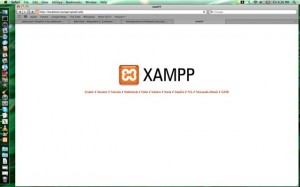NOTIFICATION: These examples are provided for educational purposes. The use of this code and/or information is under your own responsibility and risk. The information and/or code is given ‘as is’. I do not take responsibilities of how they are used.
This post is dedicated to Marina Carlstein.
Note: If your system is not MacOS X 10.6.4 or higher, there is still chance that you can use an older version. The step to install older version should be similar to the one published here. In case they are very different, please let me know.
In this tutorial, I will show you how to install locally on your computer, Apache, PHP, and MySQL server.
There are many reasons to install your own server, but the most important is the feature of testing your websites before publish them online. Sometimes, we don’t wish to have people seeing our incomplete work or we don’t have access to the internet and need to keep working on the website.
I will not going to go over the programming part. In case, you wish to learn more about scripting programming on PHP and MySQL, I would advice you to go to the following websites:
PHP: http://www.php.net
MySQL: http://dev.mysql.org
Step 1 : Download
- Go to the following website:

XAMPP: http://www.apachefriends.org/en/xampp.html - Just follow the instruction on their website and download XAMPP for MacOS X (From MacOS X Version 10.4 Intel and PPC and Higher versions).
Step 2 : Installation
- Drag to install:

- Wait for the files to be copy:

- Go to Finder → Applications → XAMPP

- Execute the XAMPP Control icon

Note: The first time you tap XAMPP Control, you may view an information window instead f the control panel. Just close it, and execute XAMPP Control again. - Start the Apache Server and MySQL server (The system may required you to input your password to allow the servers to start)

- Wait until Apache and MySQL show a green light

Step 3 : Check that Apache is working correctly
- Open your favorite browser and on the address bar type: http://localhost
- If you see an image similar to the follow, your Apache Server is running correctly

Step 4: Check that PHP and MySQL Server are working correctly
- Click on the language of your preference (I am selecting English)

- Go to Status:

- If you see PHP activated that means that PHP is running correctly.
Done! You have your served installed.
© 2010, Alejandro G. Carlstein Ramos Mejia. All rights reserved.


